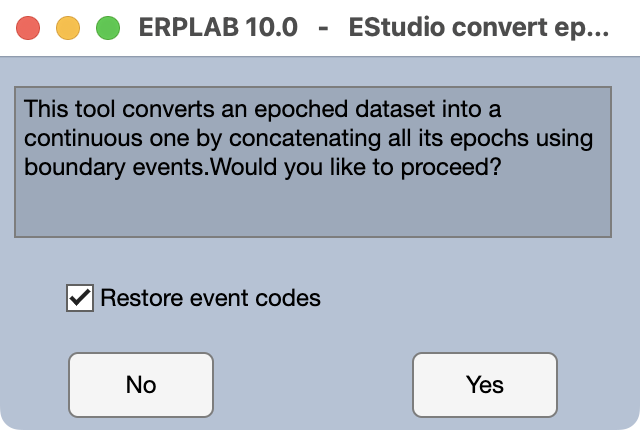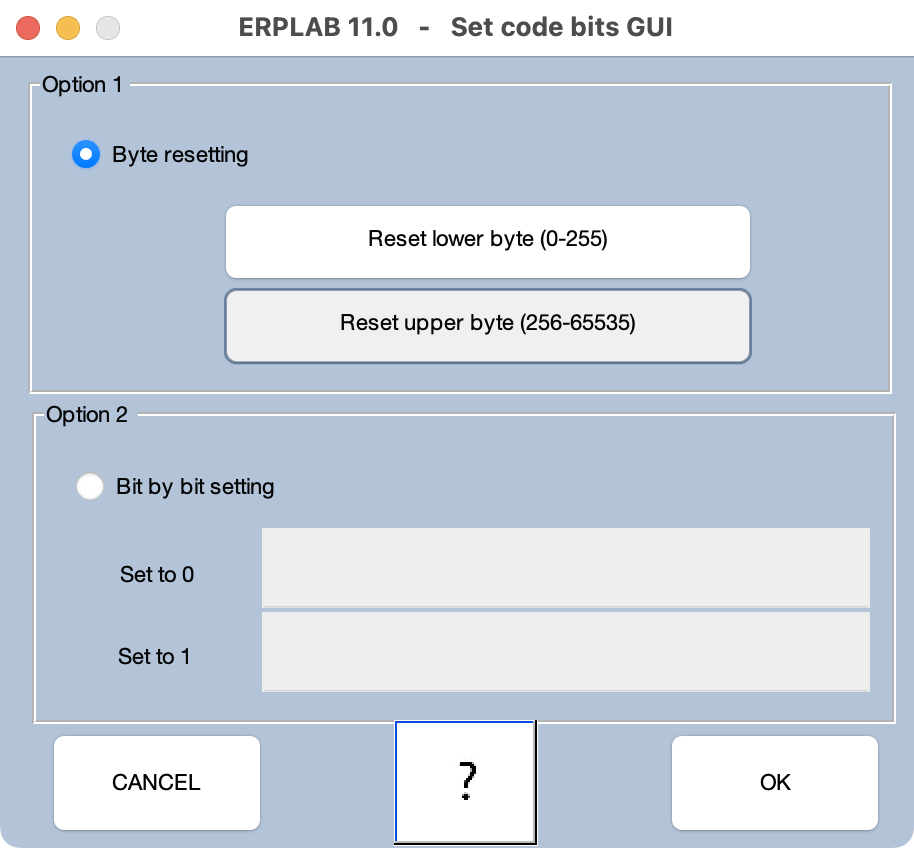-
Notifications
You must be signed in to change notification settings - Fork 73
ERPLAB Studio Panels: EEG Utilities
This panel allows you to access miscellaneous functions that are occasionally useful.
This function will convert an epoched EEGset into a continuous EEGset, with boundary events at the breaks between epochs. This is occasionally useful for applying operations that work only with continuous EEGsets. Click here for more information.
When you perform the conversion, you will see an option for restoring event codes (see screenshot below). This ensures that the event codes in EEG.event are converted from bin numbers back to the original event codes (e.g., from “B2(121)” to “121”).

This function is used to erase specific event codes from the data. For example, imagine that occasional event codes of 1001 were occasionally inserted into the data because of a hardware error. You could deleted these by specifying that you would like to delete any event codes that are equally to 10001 (specified, using Matlab syntax, as '==1001') as shown in the screenshot below.

Erasing specific event codes can also sometimes make it easier to write simpler bin descriptor files for assigning events to bins with BINLISTER.
You can also delete all event codes less than a specific value by using the < symbol (e.g., '< 100' to delete all event codes less than 100), all event codes greater than a specific value by using the > symbol (e.g., '> 255' to delete all event codes greater than 255), and all event codes that do not equal a specific value by using the = symbol (e.g., '= 200' to delete all event codes that are not equal to 200).
This allows you to re-create the original bin descriptor file that was applied to an EEGset (from information stored in the EventList).
This routine is used when spurious bits are set in the event codes. This can occur, for example, when only the bottom 8 bits of the event codes are sent, and spurious values sometimes occur in the top 8 bits. To set the top 8 bits to zero, you would set up the parameters as shown in the screenshot below.

You can also zero out the bottom 8 bits (Reset lower byte), or you can set specific bits to have a value of 0 or 1 (with bit-by-bit setting in Option 2).
This routine is used when subjects sometimes make a second response (e.g., when they realize that their first response was a mistake). If you want to ignore the following responses when assigning events to bins, this routine can make it easier to create a simple bin descriptor file.
As shown in the screenshot below, you specify the event codes corresponding to the stimuli and to the responses. The routine will then delete all responses following a given stimulus except for the first response.
